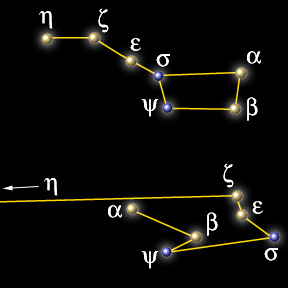Depending on your location, the same object may appear very different. Consider how a car looks from the side and from the back. This picture shows two different views of the constellation, The Big Dipper. The upper image is what we see from Earth and the lower from a different location in space.
It All Depends On Your Point Of View
In most cases, however, the stars that we see that seem to be "close" to each
other actually are quite far apart, some stars are much closer or farther than others
as is shown in the example below of Ursa Major, the big dipper.
In the figure we imagine that we have travelled through space till we
are about the
same distance away as earth but from a different position in space. The stars in
Ursa Major would change as is shown in the lower part of the picture.
You might also be interested in:

What types of instructional experiences help K-8 students learn science with understanding? What do science educators teachers, teacher leaders, science specialists, professional development staff, curriculum designers, school administrators need to know to create and support such experiences?
...more
Ursa Major is probably the most famous constellation, with the exception of Orion. Also known as the Great Bear, it has a companion called Ursa Minor, or Little Bear. The body and tail of the bear make
...more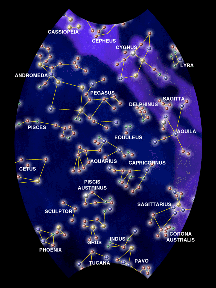
The unvarying aspect of the relationships of the stars' positions may have suggested to the ancients something that was analogous to their beliefs about the universe. It is not surprising that they chose
...more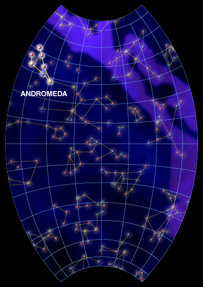
Andromeda is a "V" shaped constellation best viewed in the fall if you live in the Northern Hemisphere. Andromeda lies close to the north pole, so only a few in the Southern Hemisphere can see this strangely
...more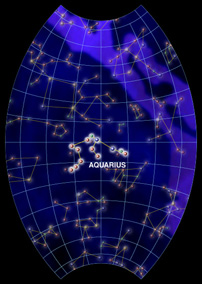
Aquarius is a member of the Zodiac, a group of constellations that the Sun travels through each year. It is best viewed in the fall in the southern sky, although much of the northern hemisphere can see
...more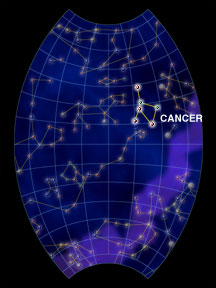
Cancer, the Crab, is a member of the Zodiac, a group of constellations that the Sun travels through each year. Cancer is best seen during the month of March, but is visible from December through June.
...more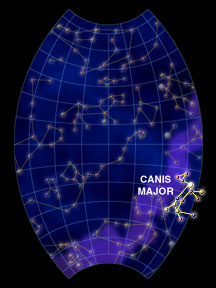
Canis Major is known as the Great Dog. In Greek myth, it is said that this constellation, along with Canis Minor, are Orion's hunting dogs. Canis Major was one of the most important constellations in
...more
The constellation Capricornus represents the figure of either a goat or a sea-goat in the sky. Capricornus is also a member of the Zodiac, a special group of constellations that the Sun travels through
...more
